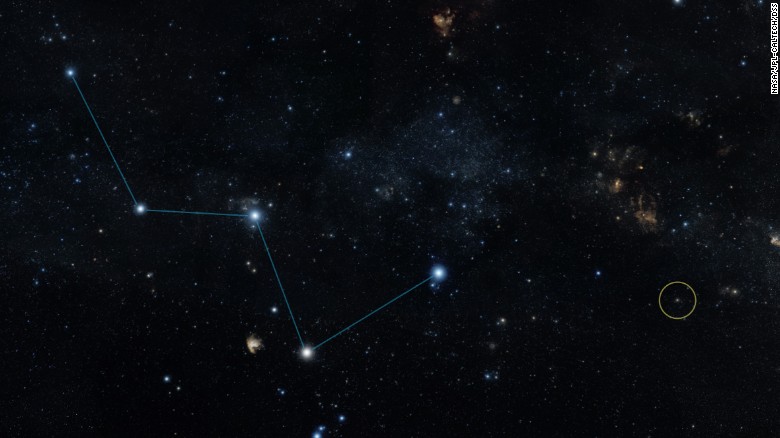
stronomers have confirmed the discovery of the nearest rocky planetoutside of our solar system.
The planet orbits a star in another solar system about 21-light years away. It cannot be seen from Earth with the naked eye. The planet is bigger than Earth, but it's too close to its star to sustain life.
Stronomers have confirmed the discovery of the nearest rocky planetoutside of our solar system.
The planet orbits a star in another solar system about 21-light years away. It cannot be seen from Earth with the naked eye. The planet is bigger than Earth, but it's too close to its star to sustain life.
The newfound world doesn't have a very good name yet -- it's just called HD 219134b. The planet was first detected using the Galileo National Telescope in the Canary Islands. NASA's Spitzer Space Telescope confirmed the finding.
Why is this faraway planet so important?
Because scientists say it will be easy to study right here from Earth. The planet sits at just the right angle to detect it when it passes in front of its sun and that will let scientists learn a lot about the planet's size and composition.
These types of planets are "worth their weight in gold," Michael Werner, the project scientist for the Spitzer mission at NASA's Jet Propulsion Laboratory in Pasadena, California, said in a news release.
Because the planet orbits a different star, it's in a different solar system. It's called an exoplanet. NASA had confirmed 1,879 exoplanets as of July 23, 2015. Many have been spotted by another space probe -- the Kepler spacecraft which was launched in 2009.
Recently Kepler made big headlines when it spotted a planet that NASA described as Earth's cousin.
NASA finds 'Earth's bigger, older cousin'
But that planet is 1,400 light-years away. Planet HD 219134b is much closer to Earth -- only 21 light-years away.
"Most of the known planets are hundreds of light-years away. This one is practically a next-door neighbor," said Lars A. Buchhave, an astronomer at the Harvard-Smithsonian Center for Astrophysics in Cambridge, Massachusetts. Buchhave is co-author of a study about the new planet.
Scientists already have determined that the planet is about 1.6 times the size of Earth and that it orbits its star in just three days.
There is one exoplanet that's even closer than HD 219134b. It's known as GJ674b and while it's only 14.8 light-years away, not much is known about its composition.
Scientists hope to learn even more about the new planet by studying it with NASA's new James Webb Space Telescope. The telescope is scheduled to launch in 2018.
Son of Hubble to peer back to the dawn of time
Big, rocky planets like HD 219134b belong to a growing class of planets termed super-Earths.
"Now we have a local specimen to study in greater detail. It can be considered a kind of Rosetta Stone for the study of super-Earths," said Michael Gillon, one of the key scientists on the discovery.

The ground-based telescope in Galileo National Telescope in the Canary Islands also found three more planets in the same star system. Two are small compared with HD 219134b and not too far from the star.
Even though only astronomers can study HD 219134b --- you can see its star with your own eyes. It's in the Cassiopeia constellation near the North Star.

 Previous page
Previous page Back to top
Back to top







